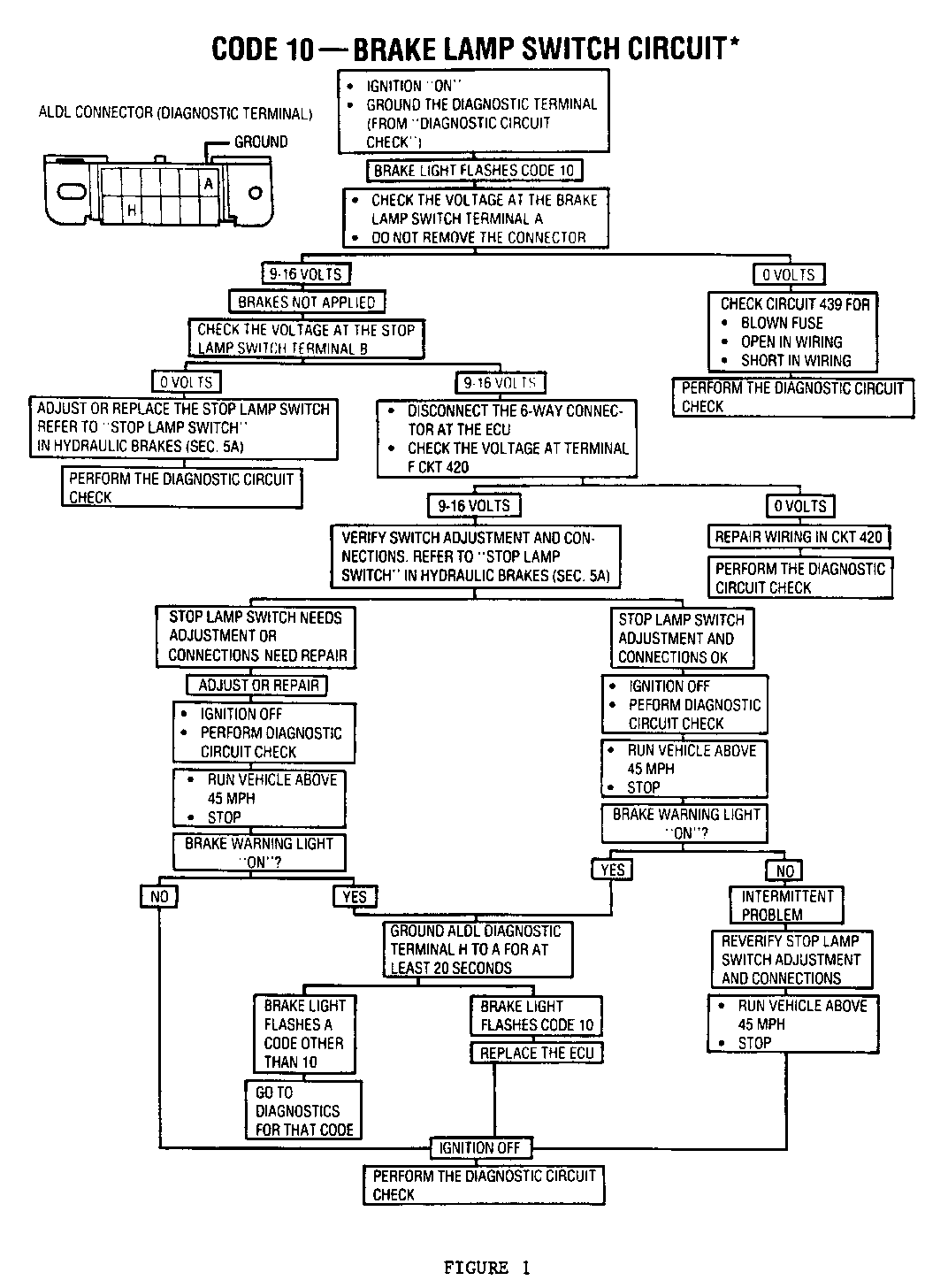UPDATED REAR WHEEL ANTI LOCK (RWAL) INFORMATION

UPDATED REAR WHEEL ANTILOCK (RWAL) INFORMATION (CURRENT RWAL DIAGNOSTICS)
VEHICLES AFFECTED: 1988 C/K ----------------- The following information has been compiled in a bulletin form to give technicians the most current information on Rear Wheel Anti-Lock (RWAL) on 1988 C/K model trucks. 1. If unable to resolve a repeating RWAL Code 10, determine if the driver is riding the brake pedal. If the driver never releases the brake pedal from the time he starts the vehicle and achieves a speed greater than 40 mph, the driver will inadvertently set a Code 10. The instances of this actually occurring are rare but should be checked. 2. When a condition exists where the RWAL is activating at low speeds during light or moderate braking, this usually can be traced to a defective speed sensor. The speed sensor output is dropping out and the RWAL is detecting this as if the rear wheels were locking. The driver will note this by a pulsation in the brake pedal, with the condition occurring typically under 25 mph. The technician should check the speed sensor resistance across the two sensor terminals with the harness disconnected from the sensor. The resistance must be between 900 and 2000 ohms, if not, the sensor must be replaced. 3. When troubleshooting the RWAL system and associated wiring, a high impedance digital voltmeter should be used. The use of a test light can cause misleading diagnostic results.
4. The RWAL ECU stored codes are cleared whenever any of the following are done:
NOTICE: The ignition key does not have to be on. A. The 6 pin connector is disconnected from the RWAL ECU. B. The stop/hazard fuse is removed. C. The battery is disconnected. D. The RWAL ECU module is replaced. In some instances technicians are mistakenly thinking that a condition is solved when the RWAL ECU module is replaced simply because the codes have been cleared. 5. When checking for RWAL ECU stored codes at the ALDL connector, a code 9 may be set if pins A & H are jumped for more than twenty seconds. This is because the RWAL diagnostic enable pin (H) is also the speed signal input to the RWAL. Grounding this pin when there is no stored code will cause the RWAL to interpret this as though there is a loss of the speed signal and set a Code 9. 6. GM CAMS has developed a rear wheel anti-lock brake analyzer which, will diagnose and isolate RWAL system conditions. The new anti-lock analyzer will not require the vehicle to be running or raised on hoist. Additionally, the new analyzer will be able to: Identify and display stored codes, isolate and test each component, and provide on screen display of RWAL circuit diagrams. Currently CAMS terminals have early release diagnostics available. Updated diagnostics along with the new anti-lock analyzer will be available at no extra charge to dealers with CAMS and Truck diagnostics by July 1. Revised code 10 diagnostics are shown in Figure 1.

General Motors bulletins are intended for use by professional technicians, not a "do-it-yourselfer". They are written to inform those technicians of conditions that may occur on some vehicles, or to provide information that could assist in the proper service of a vehicle. Properly trained technicians have the equipment, tools, safety instructions and know-how to do a job properly and safely. If a condition is described, do not assume that the bulletin applies to your vehicle, or that your vehicle will have that condition. See a General Motors dealer servicing your brand of General Motors vehicle for information on whether your vehicle may benefit from the information.
